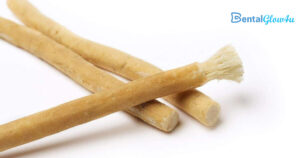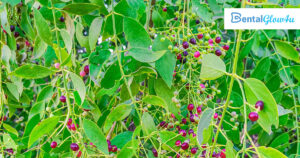The Toothbrush Tree as Your Eco-Friendly Dental Hero
The quest for a bright smile often leads us to the toothpaste aisle, but what if I told you that nature has provided us with a quirky alternative? Enter the toothbrush tree, scientifically known as Salvadora persica. This little evergreen shrub has been cleaning teeth long before the invention of modern dental care, and it’s time we rediscover its charm.
The Toothbrush Tree: Nature’s Dental Assistant

Imagine a world where your toothbrush grows on trees. Well, in some cultures, it does! The toothbrush tree has fibrous branches that serve as natural toothbrushes. Historically used in regions like the Middle East and Africa, these twigs are not just for show; they pack a punch against plaque and bad breath. The World Health Organization even backs their use, promoting them as effective oral hygiene tools. Who knew that something so simple could offer such powerful benefits?
How Does It Work?
Using a toothbrush tree is surprisingly straightforward. Just trim about half an inch of bark off one end of the twig and chew until it forms bristles—voilà, your very own biodegradable toothbrush! You can brush your teeth just like you would with a regular toothbrush, minus the toothpaste. The stick’s natural antibacterial properties help keep your mouth fresh and clean. Plus, when those bristles start looking like a worn-out broom, simply chop off the end and repeat the process!
Other Chewing Sticks Worth Exploring
While Salvadora Persica may be the star of the show, it’s not alone in the world of natural dental care. Various cultures have their own versions of chewing sticks that double as toothbrushes:
- Neem Sticks: Derived from the neem tree, these sticks are popular in India and boast antibacterial properties that can combat gum disease.
- Bitterleaf Twigs: Used in parts of Africa, these twigs not only clean teeth but also have strong antimicrobial effects against harmful bacteria.
- Pine Needles: Native Americans have been known to chew on pine needles, which can freshen breath and help clean between teeth.
A Chew on History

The use of chewing sticks dates back thousands of years. Ancient civilizations like the Sumerians were already onto this trend as early as 3500 BC. They recognized that certain plants could help maintain oral health long before fluoride toothpaste hit the market. Fast forward to today, and studies show that using miswak (another name for Salvadora persica) can significantly reduce plaque and gingivitis—talk about a time-tested remedy!
The Benefits Beyond Brushing
Not only do these natural alternatives keep your teeth clean, but they also come with additional perks:
- Gum Massage: The act of chewing on these sticks massages your gums, promoting better circulation and overall gum health.
- Fresh Breath: Many of these twigs contain compounds that neutralize bad odors—goodbye morning breath!
- Environmentally Friendly: Unlike plastic toothbrushes that take centuries to decompose, these sticks are biodegradable and leave no trace.
A Fun Twist on Oral Hygiene
Incorporating a toothbrush tree or other natural alternatives into your dental routine can add an element of fun and adventure. Imagine sharing stories with friends about how you brushed your teeth with a twig while camping or traveling abroad. Not only does it spark curiosity, but it also serves as a conversation starter about sustainable practices.
Getting Started
Ready to give it a try? You can find miswak sticks online or at specialty health stores. When using them for the first time, remember to chew gently to create those bristles. It may take a little practice to get used to this method, but once you do, you might find yourself preferring it over traditional brushing methods. In a world where convenience often trumps tradition, embracing the toothbrush tree could be a refreshing change. So next time you forget your toothbrush at home or want to try something new, consider reaching for nature’s dental tool!
